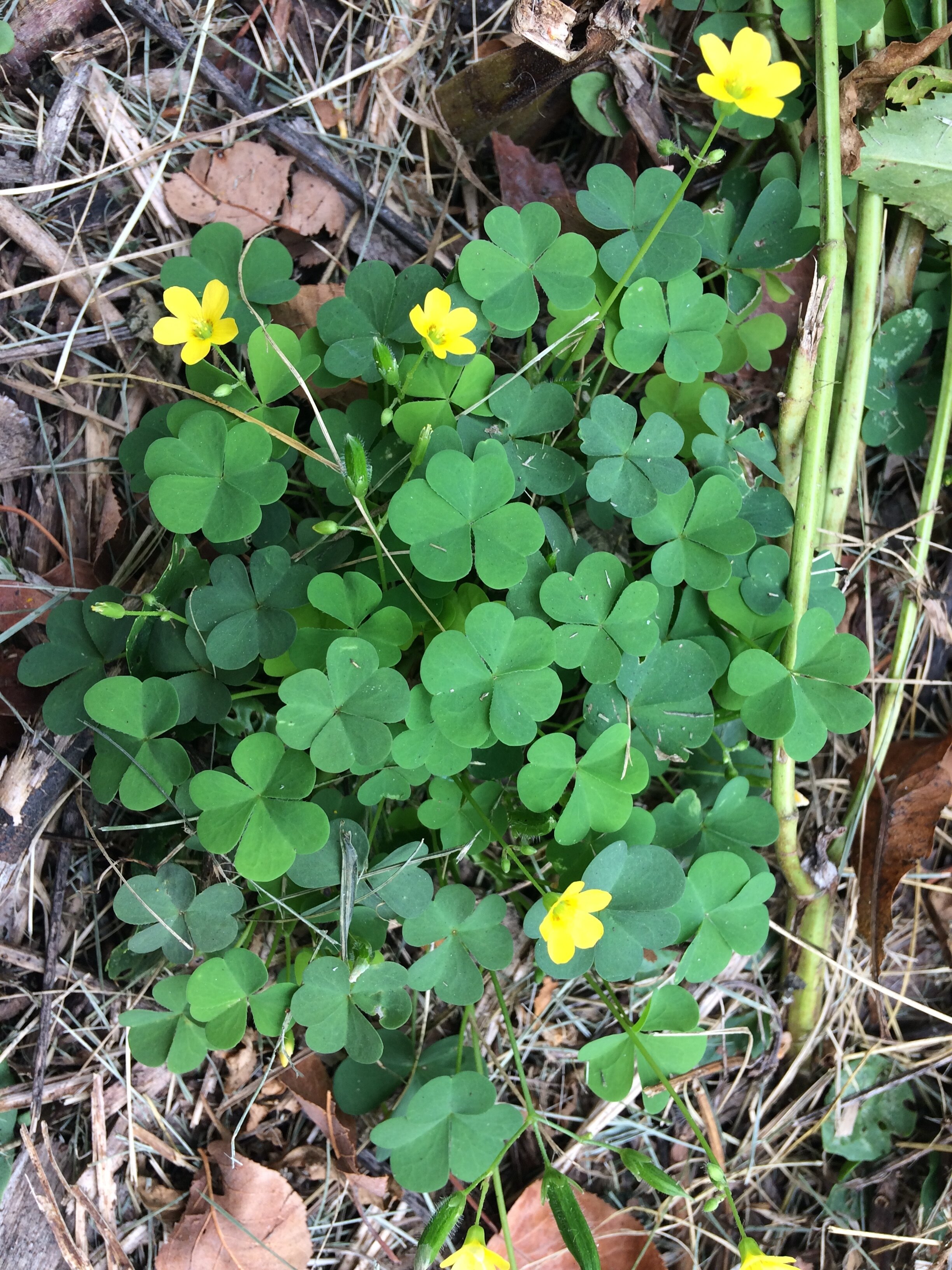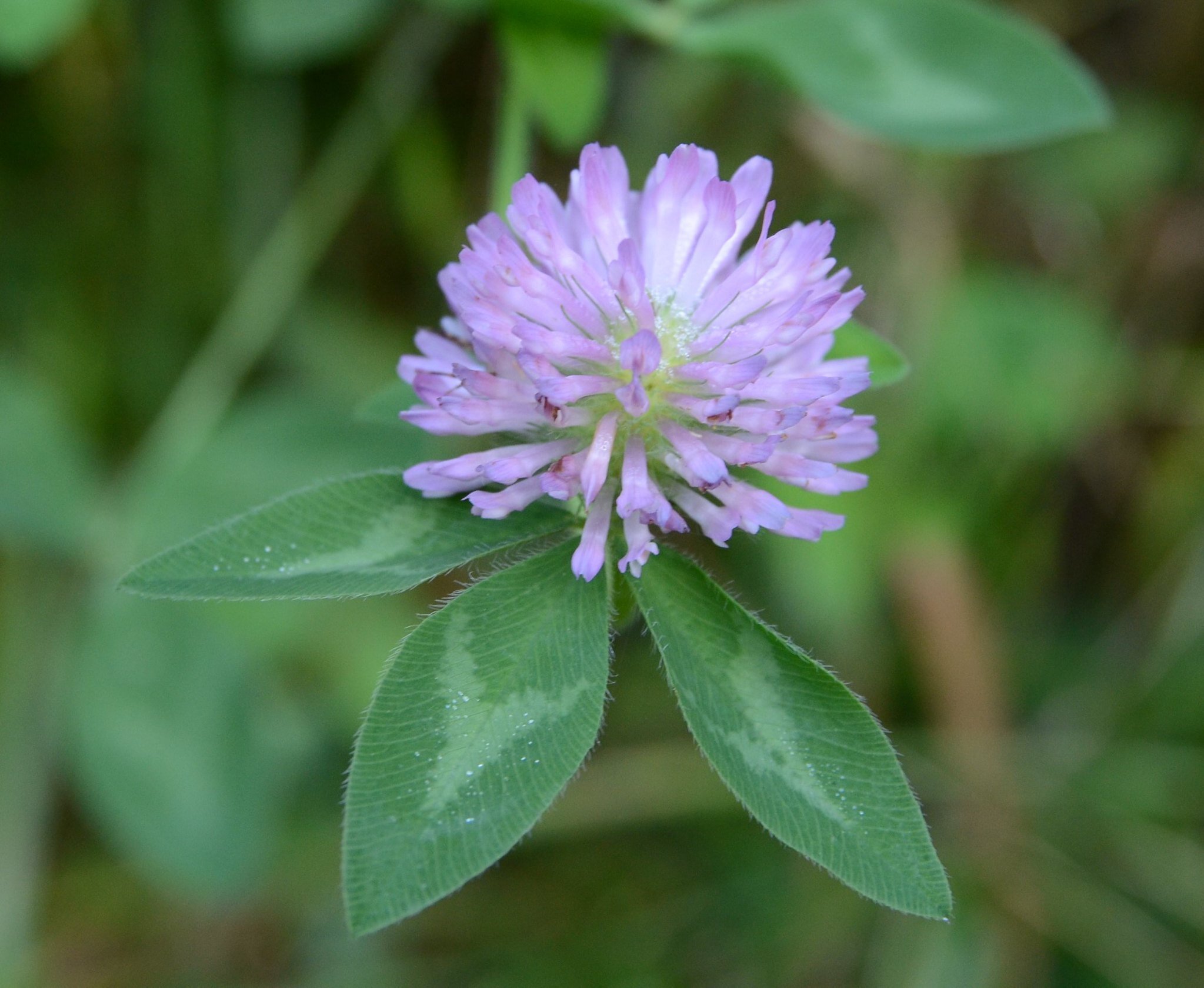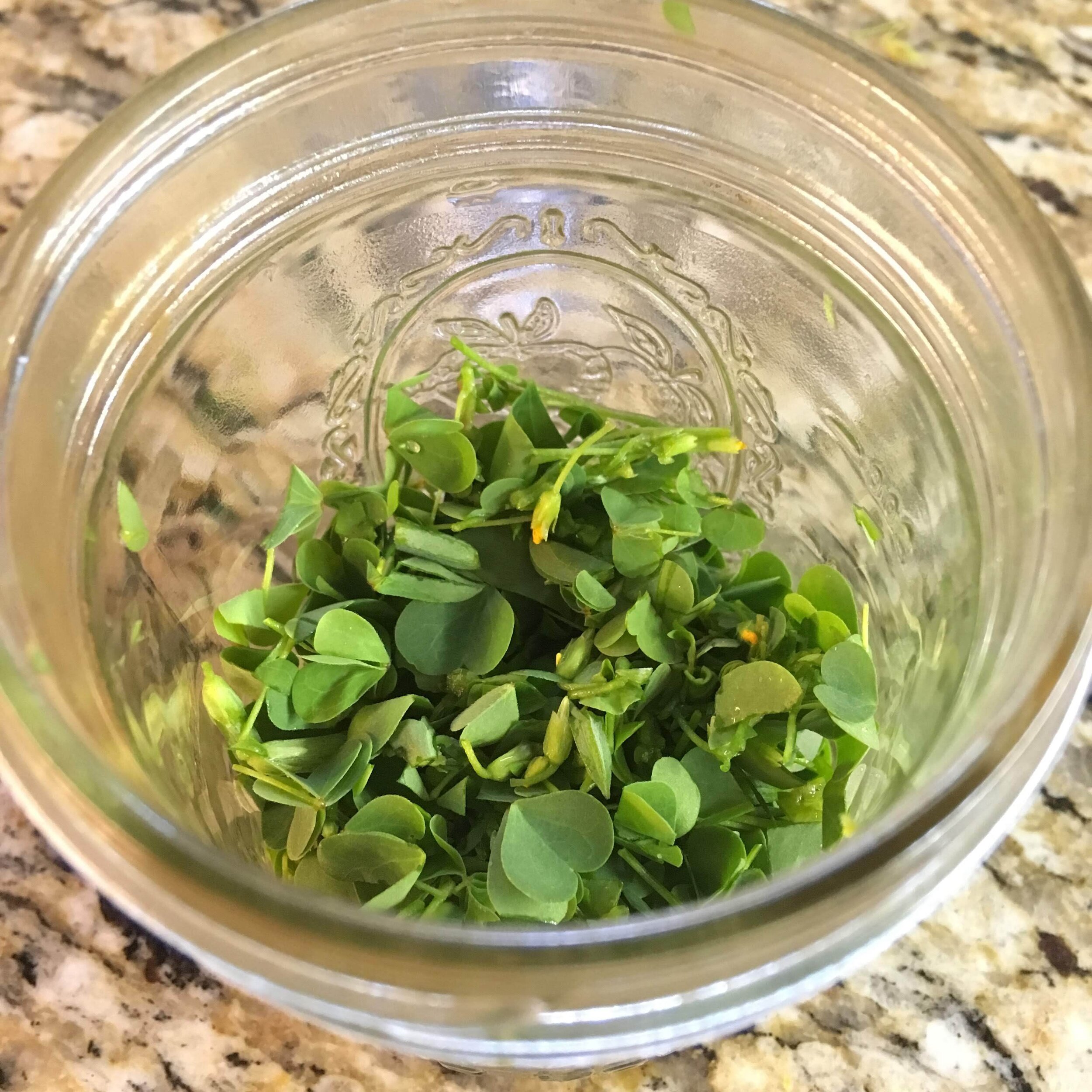Yellow Wood Sorrel: Small Plant, Big Taste
Prefer to listen to this article? No problem! Four Season Foraging now offers free audio versions of articles with the help of a text-to-speech website. Simply click the play button on the right!
Yellow Wood Sorrel (Oxalis stricta)
This diminutive plant is a common resident in yards and gardens. Though often overlooked, it packs a bright, citrusy punch! If you pull it out as a weed, I highly recommend consuming it rather than tossing it!
Habitat and Distribution
Yellow wood sorrel (Oxalis stricta) growing in a garden. Note the closed flower on bottom center.
Yellow wood sorrel is a perennial plant that can be found in sunny and partially shaded areas such as trailsides, along sidewalks, in parks, yards, gardens, and fields. Its range extends from Quebec south to Florida in the east, and from British Columbia to Arizona in the west. It is native to the US.
Identification


Yellow wood sorrel has bright green clover-like leaves and a small yellow five-petaled flower. Like clover, the leaves are palmately compound (leaflets radiating from a single point, like fingers from a palm) in threes, but unlike clover, the leaves are heart-shaped. The flower is ⅜ to ½ inch in diameter. The plant itself is small, reaching heights of 6 to 20 inches. The stems, branches, and leaf stalks are finely hairy. Seeds are formed within a small, green, banana-shaped capsule ⅜ to ¾ inch long.
Similar Species
There exist several species that look and taste like yellow wood sorrel, and can be used interchangeably. These include southern wood sorrel (Oxalis dillenii) and creeping wood sorrel (O. corniculata). They can be found across the continental US, Hawaii, and the southern Canadian Provinces.
Look Alikes


Clovers such as red clover (Trifolium pratense), white clover (Trifolium repens), and strawberry clover (Trifolium fragiferum) have leaves that are palmately compound in threes. However, the leaves are oval in shape instead of heart-shaped. Also, the color of the leaves is generally darker green, and those of red clover have a light “V” shape. The flowers of clover are also significantly different; either as flowerheads of small, tightly packed tubular flowers, or as pea-shaped flowers. Clover species can be found in all fifty US states, and all Canadian provinces except Nunavut.
Black medic (Medicago lupulina) is another flower with clover-like leaves and yellow flowerheads. But upon closer inspection, the leaves are oval- or diamond-shaped, unlike the heart-shaped leaves of yellow wood sorrel, and are typically a duller color than those of yellow wood sorrel. The flowers of black medic are tiny, packed into a round flowerhead that’s ¼ to ⅓ inch across.
Harvest and Preparation


The entire aboveground portion of yellow wood sorrel is edible and delicious: leaves, stem, flower, and seedhead. It is great raw as a trail nibble or as a sour addition to a salad, and also makes excellent infused water. To infuse your own water, loosely pack a jar full of the cleaned plant. Pour cold water over it, and let it sit in the fridge or on the counter for about 12 hours. Strain out the plant matter and taste. If it’s not strong enough, reinfuse with fresh plant matter. Otherwise, drink as is or add sweetener to your taste!
I think wood sorrel tastes best in spring when it is young, but it can be eaten throughout its life cycle, as long as the leaves are still bright and green. The young green “bananas” (seedheads) of yellow wood sorrel are crunchy and pleasantly sour. Since they’re very small, they’re not really worth harvesting in quantity, but they are fun to nibble on while gardening or hiking.
Yellow wood sorrel contains oxalic acid. This compound often gets a bad rap in wild foods literature because it blocks absorption of minerals such as calcium and iron. However, it is found in many cultivated plants, including rhubarb, spinach, and Swiss chard, but one rarely hears warnings about eating those foods. Basically, as long as you're not severely mineral deficient, and as long as you're not consuming unreasonably massive amounts of yellow wood sorrel, you'll be fine! For more on oxalic acid, check out this fascinating and informative article.
Deliciously Sour
If you’re a fan of the rhubarb flavor, I say give yellow wood sorrel a try! It’s pretty much universally liked; I enjoy sharing it with people at workshops because of the positive reactions it elicits. And since it’s so common, there’s no reason not to sample!
Join Us on Patreon!
The topic of this article was chosen in a poll by Patreon members. Thank you for your support!
If you like our foraging tutorials, please consider joining us on Patreon! It’s a simple way for you to help Four Season Foraging keep producing the informative content that you enjoy.
